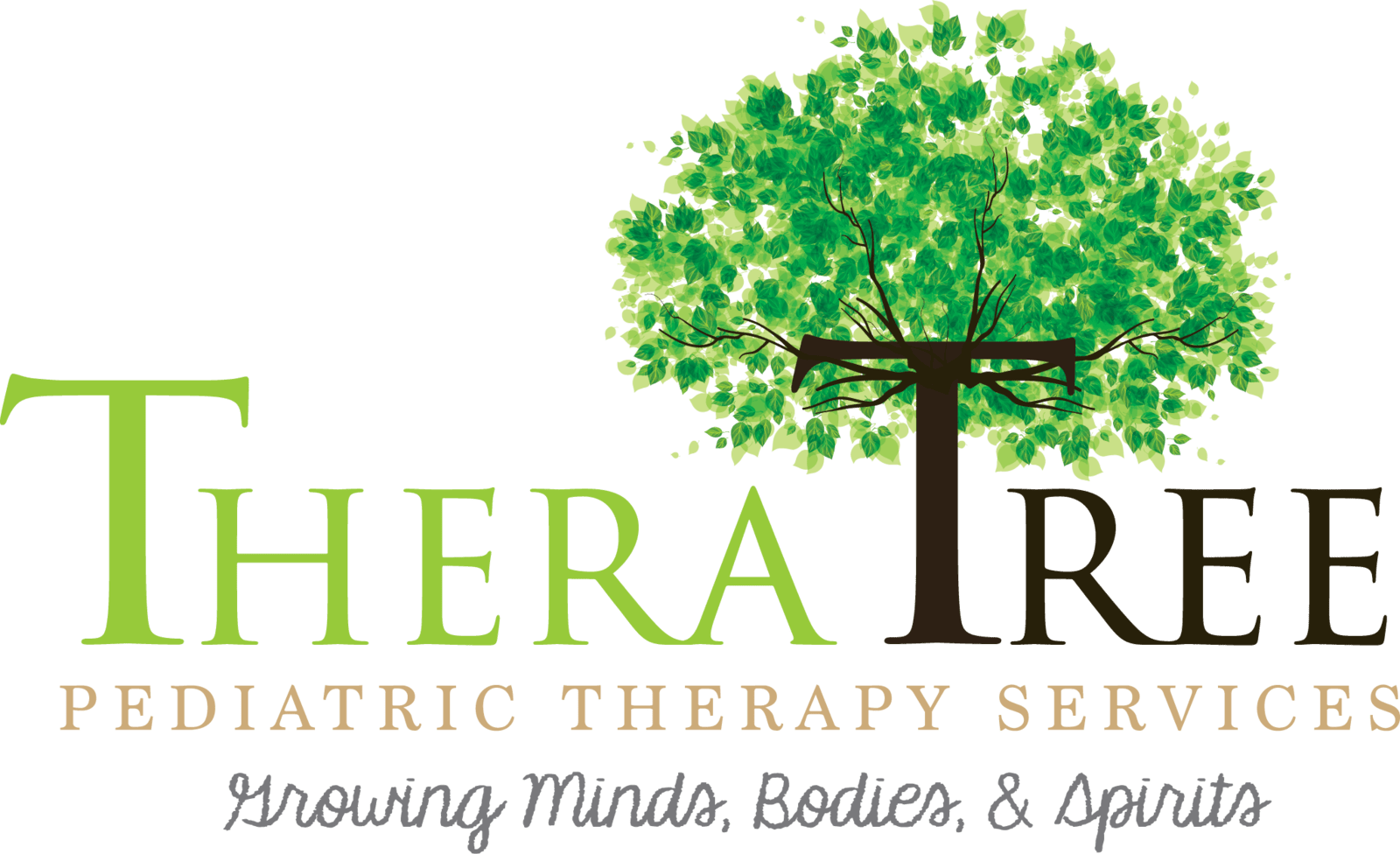By Jordan Arvin, COTA/L

A word from our Owner/CEO, Jessica Hatfield: ” It is my role to give children and families access to living happy, healthy, and well balanced lives. This access is created through developing the skills and giving the tools for living life.
It's an access for their VOICE to be heard, their BODY to move, and to become INDEPENDENT...
Growing MINDS by sprouting learning and strategies for life.
Here at TheraTree Pediatrics, our mission is: a well-balanced child mind, body, and spirit; a well-balanced family. In this blog series, we will discuss the parts of our vision, why they are important, and how we address these items at TheraTree. We do so through occupational, speech, and physical therapy.
Occupational Therapy
- Battleship
- Uno, and other card games
- Suspend
- Spot It
- Don’t Break the Ice
- Jenga
- Mouse Trap
Sensory
Sensory integration is another huge part of occupational therapy practice. Through integrating our senses, our bodies are able to perform tasks with increased independence, identify emotions and label body feelings as well as identify needs for self-regulation. Sensory integration identifies and focuses on the way our brain processes various inputs. Various sensory-based activities your child may do in occupational therapy include, but are not limited to:
- Swinging
- Crashing into foam pads
- Jumping on trampoline
- Deep pressure
- Joint compressions
- Spinning
School
School is probably the most obvious use of a child’s mind. We do see children in the school setting to assist with improved independence with school tasks. Occupational therapy can work with students on attention to task and ability to verbalize when help is needed. We frequently assist students with developing legible handwriting through activities and encouragement. We allow our students to develop their own minds by fostering a positive environment and giving positive and constructive feedback. The students that we see in school are assisted with improving reading comprehension and confidence with reading aloud and answering questions in class. We also teach valuable time management skills for completing school assignments. Our students often benefit from brain breaks at school. This is when a child is able to give their brain a break and move their bodies in order to improve their attention and focus in the classroom. Below are some YouTube videos that provide great brain break and sensory work for children:
- Move and Freeze:https://youtu.be/388Q44ReOWE
- Freeze Dance: https://youtu.be/2UcZWXvgMZE
- Do the bear walk: https://youtu.be/KG3AO6lJ4BQ
Mindfulness
Mindfulness is a word we use to describe a child’s ability to be aware of something. Yoga is a great way to encourage mindfulness in a child. Doing yoga allows a child to become familiar with their own body and relax from their anxieties. Practicing yoga and mindfulness on occupational therapy allows a child to develop their own plan for mindfulness and to be more aware of their feelings and identify ways to cope. There are many great benefits and resources for yoga:
- Superman Pose: Stand with legs wider than hips, with arms up reaching high into the sky.
- Triangle Pose: Feet spread wide, left arm swings down to touch right foot and raises back up to the sky. Repeat this with both arms several times. Remember to breathe!
- Flamingo Pose: Raise one leg and rest it on the side of the other. Bring both hands up and together. Stretch your body up, balance, and breathe.
Sequencing
Sequencing occurs when we break down an activity into smaller tasks, in order. Sequencing is addressed by OT and ST. A child needs the ability to sequence in order to perform activities of daily living, chores, school work, and simply moving around day to day. Occupational therapy assists with teaching the mind to sequence by practicing ADL tasks and teaching sequencing through games and brain activities. Speech therapy addresses sequencing by looking at the way a child understands a task and its proper order.
Speech often uses “First ___” and “Last ____” or “First...then...” vocabulary to explain and understand sequencing with children.
Speech Therapy
Speech therapy grows a child’s mind by increasing a child’s ability to communicate and understand communication. Learning how to speak and say various letters is very much brain work. It is through speech therapy that these things are addressed and improved upon. Speech Pathologists work with children on expanding their communicative brains and understanding how or why they do, hear, and say certain things. Speech therapists work on growing a child’s mind through their ability to receive and express effective communication.
Physical Therapy
How to get help
If you think your child would benefit from therapy services, you can:
- Complete our Patient referral form HERE.
- Contact our office for further information: (270) 688-8449 or contact@theratreepeds.com
